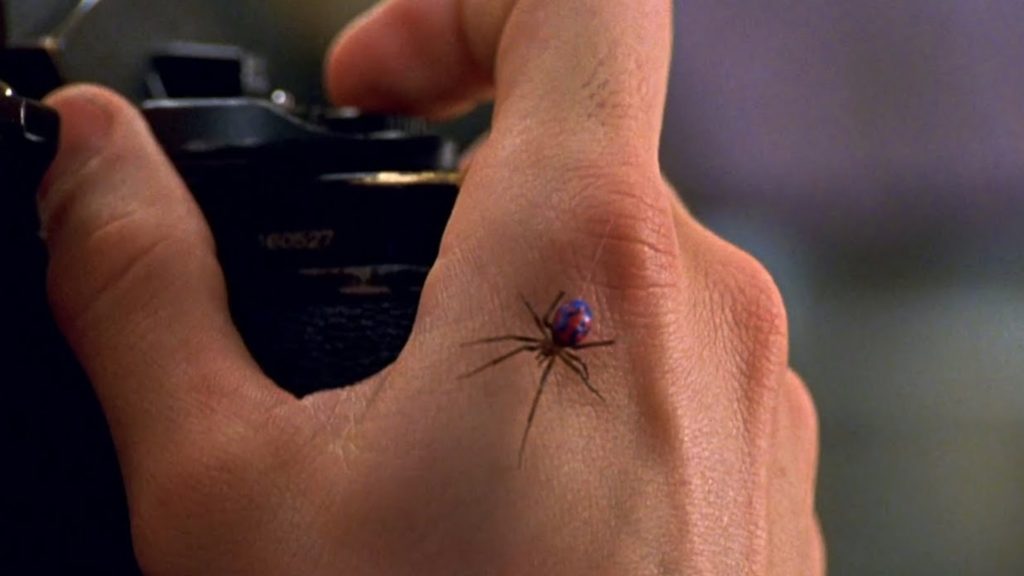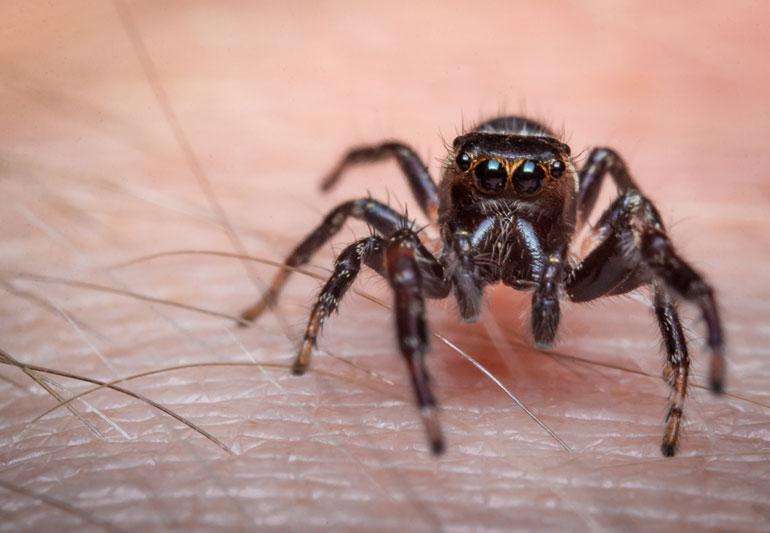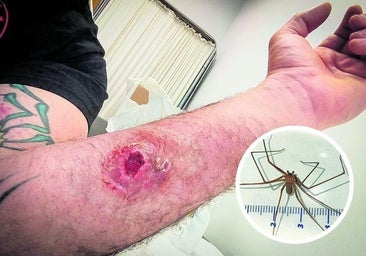
We share this planet with millions of creatures, many of which we barely notice—until it’s too late. One of the most dangerous and misunderstood among them is a spider so small, you might not even realize you’ve been bitten until the damage is done.
Yes, we’re talking about the infamous recluse spider — known for its one bite that can cause serious harm.
🕷️ The Culprit: Brown Recluse Spider
At first glance, the brown recluse doesn’t look particularly terrifying. It’s about the size of a quarter, has long legs, and is typically light to dark brown in color. The most telling feature? A violin-shaped marking on its back—earning it the nickname “violin spider.”
But don’t let its size or quiet demeanor fool you. This spider is one of the most venomous in North America, and its bite can lead to severe skin and tissue damage.

🚨 What Happens After the Bite?
The scary thing is—you might not even feel the bite when it happens.
That’s because the venom contains a powerful enzyme that breaks down cell membranes, leading to necrosis (death of tissue). While not every bite results in major damage, some can spiral into open wounds, skin ulcers, and in rare cases, require surgical intervention.
Here’s how symptoms usually unfold:
-
Within 1–4 hours: Mild stinging or redness at the bite site.
-
4–8 hours later: Pain intensifies, the area becomes swollen, and a blister may form.
-
Next 24–48 hours: Skin may turn blue or purple, ulceration begins, and tissue may begin to die.
In severe cases, people have reported fever, chills, nausea, and even seizures.
🏥 Should You Be Worried?
Yes—and no.
Not every brown recluse bite leads to horror stories. In fact, many bites heal on their own with minimal care. However, the real danger lies in misidentifying symptoms or ignoring them.
Seek medical attention immediately if:
-
The pain becomes severe.
-
An ulcer or dark lesion begins forming.
-
You experience systemic symptoms like fever or dizziness.
🔍 Where Do These Spiders Hide?
True to their name, recluse spiders like to stay hidden. You’ll usually find them in dark, quiet places such as:
-
Behind furniture
-
Inside old shoes or clothing left untouched
-
Basements, attics, or sheds
-
Under piles of wood, cardboard, or debris
They aren’t aggressive and usually bite only when disturbed—like when someone puts on an old shoe or moves a box without looking.
🛡️ How to Protect Yourself
Prevention is key. Here’s how to stay safe:
-
Shake out clothes and shoes before wearing them, especially if stored in the garage or attic.
-
Declutter spaces where spiders may hide.
-
Use sticky traps in known trouble areas.
-
Seal cracks and gaps in doors, walls, and windows.
-
Wear gloves when cleaning dark corners or moving storage boxes.
And remember—if you’re not sure what bit you, take a photo of the spider (if you can do so safely) and show it to your doctor. Identifying the species helps guide treatment.
✅ Final Word
Most spiders are harmless and even helpful, controlling pests and insects. But the brown recluse? That’s one spider you definitely want to avoid crossing paths with.
So next time you’re sorting laundry from the garage, putting on an old pair of boots, or moving things around the attic—look twice. Because one tiny spider might just pack a venomous punch that could leave a lasting mark.
Stay safe, stay smart, and share this with someone who needs to know!


